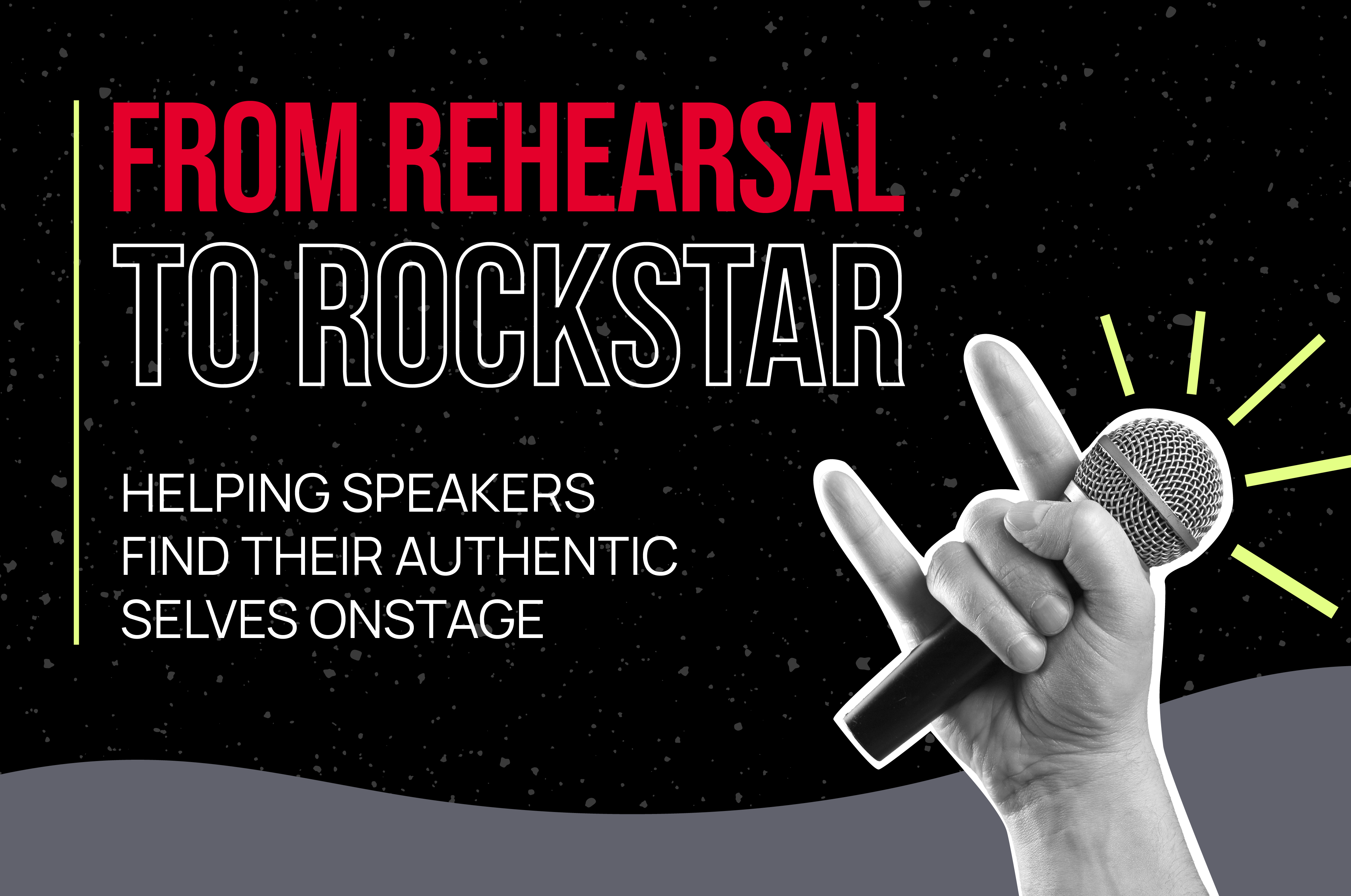
My client sat across from me in the offline rehearsal room. We were working on her remarks, and she was feeling frustrated.
“I’m so comfortable with a small group of people. I don’t need a script. I just… talk. But on a big stage, I feel like everything changes.”
We often work with people like this: brilliant thinkers, experts in their field and highly credentialed. They’re gifted communicators with a lot of interesting things to say. But finding that voice onstage (as opposed to in a meeting room) can feel elusive.
The great news: it is entirely possible to help speakers bring their authentic selves to an onstage speaking engagement. And that’s because public speaking is a skill.
With any skill — whether it’s public speaking, drawing, or shooting free throws — some people are naturally stronger at it than others. But any skill can be improved through practice and coaching. Speaking is no different.
Whether I’m working with a seasoned speaker who can ad lib an entire keynote, or a new speaker in their very first public engagement, the basic Do’s and Don’ts are a constant.
The Do’s and Don’ts of Positive Speaker Coaching
DO: Stay grounded in empathy and respect. It’s critical to acknowledge that a speaker is placing enormous trust in their writer/coach. They are showing vulnerability by getting up onstage. Their inner voice may be shouting all kinds of nonsensical things at them. To counteract this, they MUST feel like you are “in their corner” and rooting for them to succeed.
DO: Bake the speaker’s voice into the script early and often. I love to get a sense of a speaker’s humor or a favorite anecdote, and put that into the script early. This sends a clear message: this is YOUR moment onstage. Your remarks may be scripted, but they are personal, authentic and all you.
DO: Have the speaker read the script, out loud, at least once BEFORE they get on stage. This seemingly-obvious step can be overlooked among crowded pre-production schedules… yet it’s critical for a simple reason. You do not know how a speech sounds until it’s spoken by the person who will deliver it. Reading words on paper is not the same as delivering them to the room. The “table read” is a tough, and sometimes awkward, but necessary step to establishing comfort.
DO: Be cautious about making changes, especially in later iterations. As writers, we can feel the urge to wordsmith and tweak right up until showtime. Resist this urge. A speaker’s confidence and presence onstage are more important than squeezing perfection out of every sentence. (Big or noticeable issues, however, should always be fixed).
DON’T: Let speakers feel constrained by the first outline. An outline is an important step for any remarks longer than a few minutes. It helps organize a speaker’s thoughts and evolve them towards a final product. However, it’s important to remind speakers that an outline is malleable. If something isn’t flowing, move or remove it and keep iterating.
DON’T: “Perform” a speaker’s remarks for them. I may read a version of the speech to a client so they can hear my inflections, but it’s far more important for them to say the words. This helps them establish comfort with, and ownership over, the material. They’re the rockstar after all.
DON’T: Share your stress. In this business, our clients rely on us to stay positive and communicate that all is well. If the show opens at 10am and I’m getting notes from my client at 7am, that isn’t ideal… but it is our responsibility to do everything in our power to make it happen, remind the client we have their back, and be realistic about what can actually be done.
And finally…
When that speaker comes off the stage, it’s time for a BIG hug and/or a high five… because they have TRIUMPHED!
The reason we get to do what we do, is because there are people willing to go onstage and open themselves up to an audience. There are few things as rewarding as seeing a speaker knock it out of the park. Especially when they’re newer to public speaking.
I hope these suggestions help you cultivate the rockstars in your client base.



